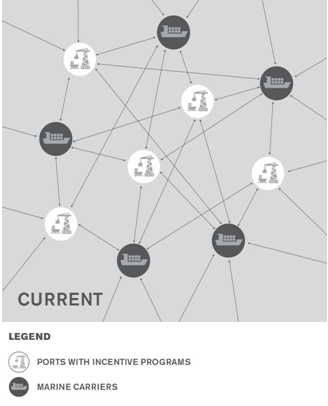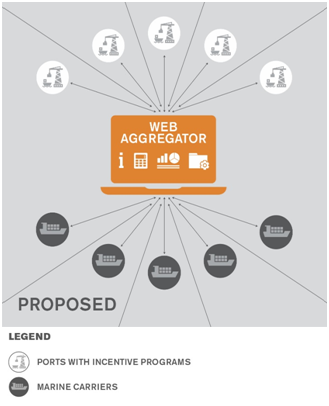Port authorities around the world are increasingly taking responsibility to protect the environment. More than 50 port authorities and ports offer incentives for shipping companies that go above and beyond regulatory requirements to improve their environmental performance. However, the incentives offered and application processes for each port are different and this can make it difficult for marine carriers and their agents to fully participate in programs designed to help protect the environment.
Get updates
Request to be added to our email distribution list or sign up for quarterly teleconferences
We are leading an International Collaboration on Ship Emission Reductions (ICSER), comprising a group of port authorities, government agencies and non-governmental organizations that are working together to make it easier to learn about, use and administer ship incentive programs to promote an increase in voluntary environmental performance in marine shipping.
Through this collaboration, we aim to build an international tool to increase shipping companies’ participation in global environmental incentive programs by making it easier for marine carriers and their agents to see all available programs worldwide. This list of environmental incentive programs will include the EcoAction Program at the Port of Vancouver, which offers incentives to shipping companies that choose to invest in fuel, technology and environmental management options to conserve energy and reduce air emissions above and beyond regulatory requirements.
Current situation

Today, over 50 ports around the world offer incentives for ships that go beyond regulatory requirements to improve their environmental performance. This is positive, but marine carriers are faced with an expanding array of incentive opportunities that are challenging to navigate.
It is increasingly difficult for marine carriers and their local agents to understand the detailed requirements and application processes needed to obtain each incentive. It is also challenging for port authorities to administer these programs efficiently, and there may be missed opportunities where related industry stakeholders who could add value to this process are currently not part of it.
In 2019, we undertook the first phase of this initiative, with guidance from an international project team made up of the Port of Gothenburg, Port of Los Angeles, Port of Long Beach, Natural Resources Defense Council (China), China Waterborne Transport Research Institute, United States Environmental Protection Agency Green Ports and Vessel Program, and Transport Canada. The first phase focused on broad, global stakeholder engagement to validate and refine our proposed approach, and input was received from ports, marine carriers, non-government organizations and government agencies.
What are we doing?

Outcomes from the first phase confirmed the proposed approach of a joint web-based aggregation platform, which could act as a one-window portal for marine carriers, ports and other industry representatives.
We’ve heard that it is important the proposed web resource doesn’t try to replace existing incentive programs—it needs to support existing programs. The approach supports voluntary actions and enables port authorities to determine what, if any, incentives to offer and how to offer them. The approach also helps by reducing complexity and administrative burden for users, and will consider any possible data security issues. The website may also be helpful in sharing information on environmental infrastructure, what is available and where.
The following graph shows how each stakeholder group, and all stakeholders combined, rated the importance of each proposed function of the web portal:

More detailed results can be found in the ICSER Update: Survey Results & Next Steps presentation.
Stakeholder engagement
Continued involvement by a range of stakeholders from all over the world is key to the success of this initiative. You can provide input and be involved in the following ways:
- Sign up to our ICSER Stakeholder Engagement List: Through this list, you’ll receive an invitation to participate upcoming engagement opportunities.
- Sign up for our quarterly teleconferences: During these teleconferences, you will learn more about this project, and take part in discussions on a range of other topics of mutual interest such as black carbon, scrubbers and shore power. For those unable to call-in, notes and presentations are shared with the larger email distribution list to facilitate inclusion.
What’s next
Based on the positive outcome from the first phase of engagement, we are looking to proceed with a second phase of engagement in 2020 in partnership with other interested stakeholders. The focus of the second phase will be determined collaboratively by the partners who come together to move it forward. This could include:
- A fully functional but geographically pared down version of the portal along a select route, with select marine carriers
- A global roll-out of the portal with reduced functionality
- An information-only portal
- Further refinement of the portal with a range of stakeholders
